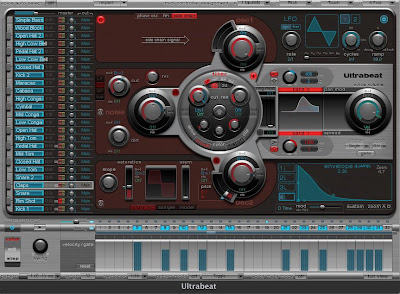 Aside from making music, my other great passion in life is cooking. I'm not a chef by any stretch of the imagination, but I can throw together some halfway decent tasting stuff. The problem is, every place my wife and I have lived so far has had a pretty small kitchen. This means we don't have near the room to store all the cool little kitchen gadgets and tools we'd love to have and that we need to use what we have on hand to get the results we want.
Aside from making music, my other great passion in life is cooking. I'm not a chef by any stretch of the imagination, but I can throw together some halfway decent tasting stuff. The problem is, every place my wife and I have lived so far has had a pretty small kitchen. This means we don't have near the room to store all the cool little kitchen gadgets and tools we'd love to have and that we need to use what we have on hand to get the results we want.Making music on your computer can be very similar. Sometimes, you find yourself wishing you had a certain effect, only to realize you could reach the same end with something you already have. Let's take gating effects, for example. A while back, I showed you how to use the noise gate in Logic to make gated trance pad sounds the old fashioned way. This is great for basic gating, but what if you want something that offers a few more sculpting options. Enter Ultrabeat. I bet you didn't even know you could use it as a gate, did you? Well, that's what we're going to talk about today.
1. Open up Logic and initialize two new software instrument tracks.
2. On the first instrument track, assign any sort of sustained sound you like - synth pad, sweeps, strings, choirs, organs, a vocal, whatever. Play a 4 bar chord progression into the sequencer and set it up to loop. Change the OUTPUTs of the instrument (the dropdown menu right below the instrument's name on its mixer channel) to BUS 1. At the same time, change BUS 1's OUTPUT to NO OUTPUT. You will no longer hear your instrument playing. No worries, we want Ultrabeat to control that.
3. On your second instrument track, assign an instance of Ultrabeat. Choose a sound from the blue list on the left side of the interface that you'd like to replace as the gate channel by clicking on the sound name. You may have noticed in the past that on Ultrabeat's OSC 1 you can choose from PHASE OSC, FM, or SIDE CHAIN as your oscillator source. SIDE CHAIN lets you take an outside audio signal and not only gate it using the sequencer, but run it through Ultrabeat's filter, envelopes, and LFOs. You do this by selecting BUS 1 as the SIDE CHAIN source from the dropdown menu in the top right of the plug-in window. Next, press the SIDE CHAIN selector in the OSC 1 section so it lights up as the oscillator's source. We won't need the NOISE section or the OSC 2 section, so go ahead and turn those off by clicking their 'power' buttons so they dim. You can use these sections to mix with your gated sound, but for the sake of simplicity, let's just stick to the gated sound for now.
4. Go down to the sequencer and turn its 'power' button on. Program an interesting rhythmic pattern here, and press PLAY on Logic's transport bar and you should hear your sustained sound in all its newfound, chopped-up glory. Adjust ENVELOPE 4's DECAY as necessary to determine the shape and sustain of each note the gate triggers here.
5. Cool, huh? That's just the beginning, though. You can use Ultrabeat's filters (complete with overdrive and bitcrushing effects) to shape your sound further, you can modulate the filter with the LFO or other envelopes, use the PAN MOD or SPREAD to alter the sound's stereo position - you get the idea. Not a bad bonus feature for what is already a pretty kick-ass drum machine, eh?
Here is a quick before and after example to demonstrate the effect. First, you'll hear the original synth track, a string sound from EXS24. Next, you'll hear the same part gated through Ultrabeat with some bitcrushing applied, and some filter modulation opening and closing a low pass filter and a little bit of tape delay added for space.




















4 comments:
cool
I love rhythmic effects
anyone entering the remix contest for DM at www.beatportal.com ?
In my opinion one and all should browse on it.
This will not have effect in fact, that's exactly what I suppose.
Post a Comment